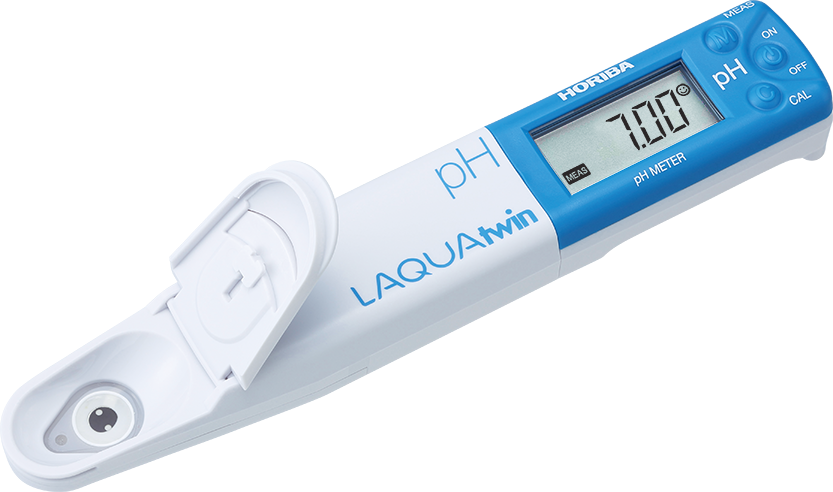Dissolved Oxygen in the Greenhouse
Greenhouse crops perform better with higher levels of dissolved oxygen in the irrigation water. While above 5 mg/L of dissolved oxygen is considered marginally acceptable for plant growth, greater than 8 mg/L is considered as healthy. However, it is a common problem in greenhouses for DO levels in the irrigation feed to fall to hypoxic (< 4 mg/L) levels. It is hence important for growers to monitor and ensure that DO levels are optimal for plant growth.



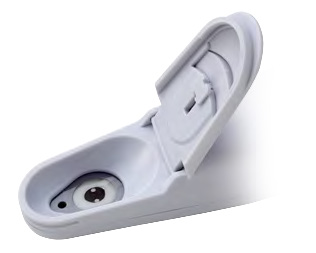
Introduction
Dissolved oxygen refers to the gaseous oxygen dissolved in water. The concentration of dissolved oxygen is crucial to aquatic organisms as they depend on dissolved oxygen for respiration. Despite being producers of oxygen, plants require oxygen to live as well. Ensuring sufficient levels of dissolved oxygen in the irrigation water improves a plant’s overall health. An elevated level of dissolved oxygen leads to increased nutrient uptake and conversion efficiency, in turn enhancing the growth and development of roots, vegetative, and flowering characteristics. Increasing the levels of dissolved oxygen in irrigation water also improves the resistance of plants to stress caused by adverse conditions, in turn reducing the threat of various opportunistic pathogens.
Dissolved oxygen can enter bodies of water naturally, typically at the water surface where atmospheric oxygen establishes an equilibrium with the water. In larger bodies of water in nature, waves and wind help increase surface exposure, increasing surface exposure and allowing more oxygen exchange and dissolution. When water holds as many dissolved gas molecules as it can, this is known as 100% saturation. It is possible for saturation to exceed 100%, and this is known as super-saturation. Dissolved oxygen sensors measure concentration as a percentage of saturation (%), in milligrams per liter (mg/L), or in parts per million (ppm). The amount of oxygen that can dissolve in water is affected by the temperature and salinity of water – amount of oxygen dissolved in water decreases as temperature and salinity increases.
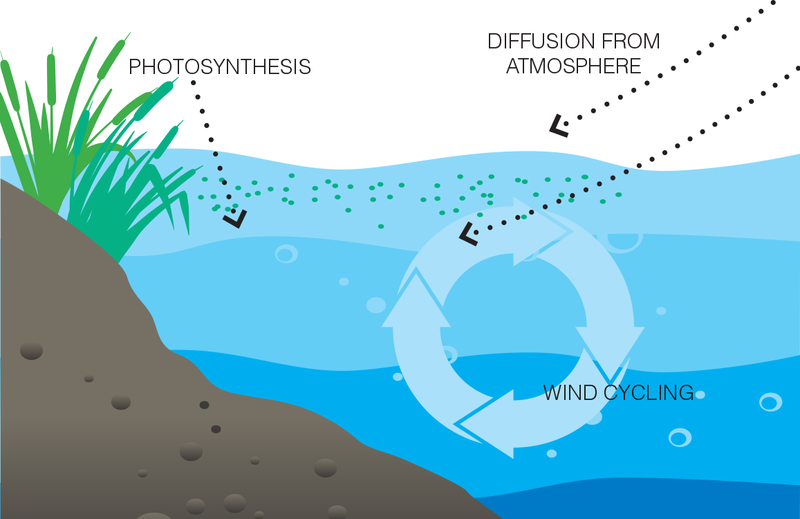
Optimal levels of dissolved oxygen
In the greenhouse, there are many challenges in ensuring that the dissolved oxygen in irrigation water is sufficiently high, due to competition for dissolved oxygen from biological oxygen demands (BOD) in the irrigation channels and piping. Irrigation water is typically considered marginally acceptable for plant health at DO levels above 5 mg/L. Most greenhouse crops will perform better with higher DO levels, with levels greater than 8mg/L generally being considered as good for greenhouse production. Research has also found that having a high concentrated dissolved oxygen (20-30 mg/L) supply was effective in improving plant growth under a low greenhouse temperature in a deep hydroponic culture. However, if dissolved oxygen levels drop below 4 mg/L, the water is considered to be hypoxic which is detrimental to plants. Dissolved oxygen levels below 0.5 mg/L is considered to be anoxic and does not support plant or animal life. Many greenhouses face the problem of having dissolved oxygen levels in irrigation water falling in the hypoxic range. It is the grower’s responsibility to monitor dissolved oxygen levels and take appropriate measures to ensure healthy crop growth.
Dissolved Oxygen monitoring equipment
HORIBA’s Dissolved Oxygen (DO) electrodes are galvanic probes with integrated temperature sensors. With galvanic probes, calibration can be performed immediately in air. This is because galvanic sensors are self-polarizing due to the electrode potential generated by the use of dissimilar metals. Horiba’s dissolved oxygen probes use unique and innovative tips which are replaceable, comprising of an anode and cathode confined in electrolyte solution by an oxygen permeable membrane. Dissolved oxygen molecules diffuse through the membrane to the sensor at a rate proportionate to the pressure difference across it. There are two models available, the 9551-20D and 9551-100D, one having a cable length of 2m and the other having a cable length of 10m. These DO probes can be equipped on a suitable meter such as the LAQUAact DO 110 and DO 120 handheld meters for dissolved oxygen, or the LAQUAact PD 110 handheld meters for multi-parameter analysis.
Method
Calibrate the Horiba LAQUAact DO110/120 or PD110 handheld meter with the 9551-20/100D dissolved oxygen electrode connected. The dissolved oxygen galvanic probe can be calibrated either in air or in standard solution. In most cases, a one point air calibration will suffice.
Procedures for air calibration
- Remove any drops of liquids from the membrane at the end of the DO tip by wiping with soft tissue paper or similar material to dry it.
- Avoid calibrating in places with extreme temperature fluctuations, places exposed to the wind or rain, and places near heating equipment.
- Do not grasp the holder during or immediately before/after calibration, as body temperature adversely affects the stability of the readings. The temperatures of the DO electrode and the air is important in achieving proper air-calibration.
- It is important for the temperature of the DO probe has to be equalized with the surrounding air to achieve proper air-calibration. If possible, allow the DO electrode to sit in the open air for approximately 20 minutes prior to calibration.
Standard solution calibration and sample measurement
- Wash the electrode with tap water and dry it with filter or tissue paper, each time prior to immersing it in the solution.
- When immersing the electrode in the solution, be sure that the temperature sensor is completely immersed.
- Stir the DO electrode around in the solution, so that the temperature of the electrode becomes the same as that of the solution.
- Ensure that the membrane has no dirt or air bubbles on it.
- Measure the DO of the solution, making sure the flow speed on the surface of the membrane is constant. Move the electrode up and down at a speed of approximately 20 cm/s to 30 cm/s.
References And Suggested Readings
- Dramm.com. (2014). Dissolved Oxygen in the Greenhouse. [online] Available at: www.dramm.com/media/Dissolved%20Oxygen%20in%20the%20Greenhouse.pdf [Accessed 14 Jan. 2019].
- Suyantohadi, A., Kyoren, T., Hariadi, M., Purnomo, M. and Morimoto, T. (2010). Effect of high consentrated dissolved oxygen on the plant growth in a deep hydroponic culture under a low temperature. IFAC Proceedings Volumes, 43(26), pp.251-255.
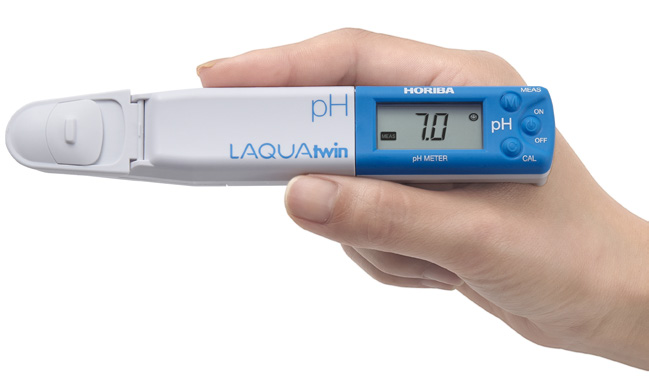
LAQUAtwin: the only meters with flat sensor technology.
HORIBA’s highly-sensitive, flat sensor technology opens up new possibilities for sampling and sample types. Only a small amount of sample is required, so you can easily sample in situ without the need for beakers or other labware. Sensors are easily replaced as required.
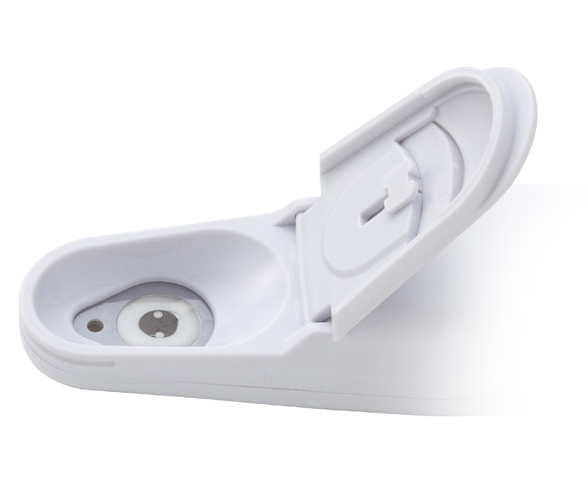
Calibrate and measure at the touch of a button — the smiley face will tell you when the result can be read.
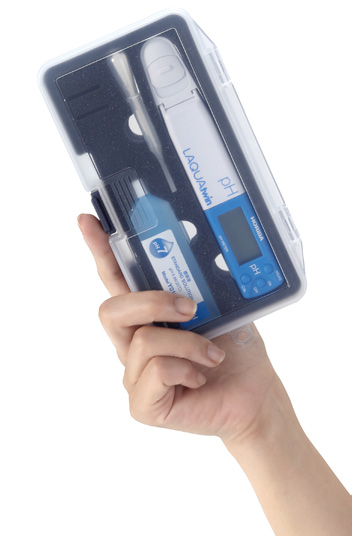
LAQUAtwin is fully waterproof and dustproof.
The meter and sensor are fully waterproof* and dustproof, so you can take it anywhere.
* IP67 rated. Will withstand immersion for 30 minutes at 1 m. Not suitable for underwater use.
Carry case comes as standard for handy portability.
The compact carry case contains everything you need for your measurements, including the standard solution and sampling sheets.

